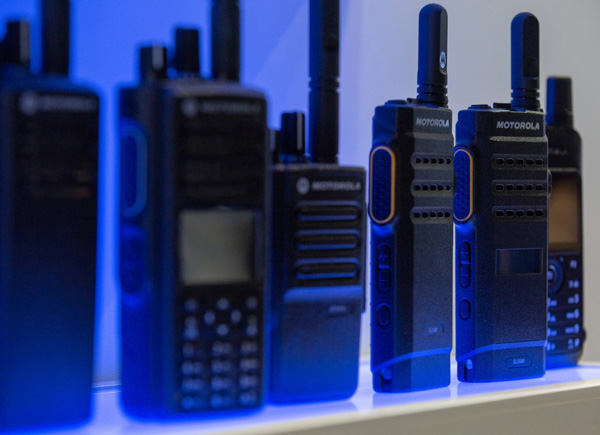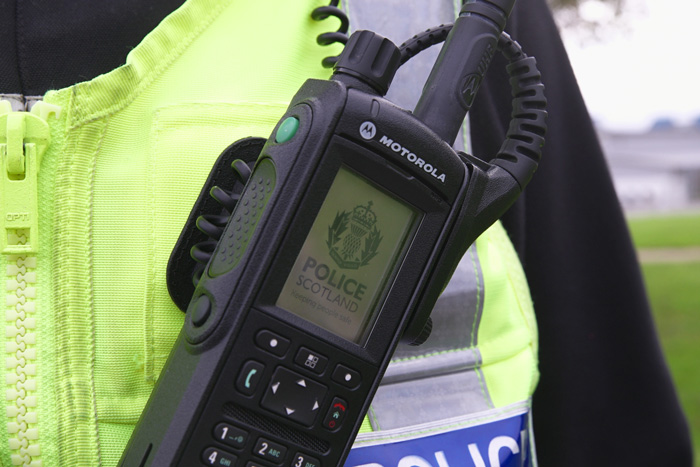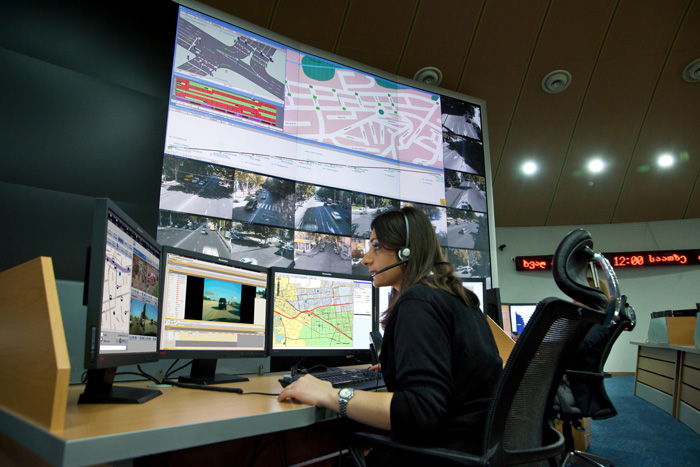Company Profile
Mission Critical: How Motorola Solutions Returned to its Roots
Motorola was once known for its popular consumer cell phones. But after failing to keep pace with technological change, it spun into two companies. Robert Scammell explores how its successor, Motorola Solutions, has returned to its roots as a provider of mission-critical communications equipment, and how it is keen to avoid the mistakes of its past

At 92 years young, Motorola has been around the block a few times. And on its way round, the US firm has been quite busy. It pioneered early car radios. It provided portable two-way radios during World War II. And, in 1969, its transponder relayed humanity’s first words from the Moon.
In the early 2000s, Motorola rose to the upper echelons of the mobile phone market, only to crash and burn just a few years later.
Despite the huge success of its Motorola Razr V3 – selling more than 130 million units over a four-year run – the phonemaker struggled to compete with the growing dominance of Apple and Samsung. Between 2006 and 2009, its share of the mobile phone market tumbled from 23% to 6%. On 4 January 2011 Motorola officially split into two new companies.
Motorola Mobility would continue to focus on cell phones. Motorola Solutions, on the other hand, would cater to enterprises and governments, returning to its roots as a provider of mission-critical communications technology.
For many consumers, the Motorola name is still synonymous with phones. But this legacy brand association hasn’t proven problematic for Motorola Solutions’ customers, says the company’s senior vice president and chief technology officer Paul Steinberg.
“It's just the lay person on the street that sometimes associates Motorola with what they see on the consumer side,” he says.
Motorola’s decline is a familiar cautionary tale of a company slow to adopt to technological disruption. But Motorola Solutions, seen as the direct successor to Motorola, is keen to ensure history doesn’t repeat itself.
While radios are the bedrock of mission critical communications, and remain a key revenue stream for Motorola Solutions, the company has in recent years been pivoting into a range of digital technologies, from video surveillance to natural language processing. In a sense, the company is combining its 92-year legacy with a more forward-looking mentality.

The future of policing
Policing is a key market for Motorola Solutions, particularly on both sides of the Atlantic. More than 40,000 UK police officers use Motorola’s Pronto, a mobile application which Steinberg describes as a “digital notebook for policing”.
In November 2018, Lincolnshire Police adopted Motorola Solutions’ cloud-based control room, which integrates various crime-fighting tools into one platform, including CCTV feeds, body-cam video and missing person registers.
“What we're trying to do is to weave those pieces together [in a way] that's beneficial to our users.”
Steinberg says the command centre space has “traditionally been a very fragmented world”, in which one firm might provide the console, another computer-aided dispatch – and so on. Motorola’s aim is to offer the full suite, and in doing so capture a large slice of a lucrative market.
“So in that sense, what we're trying to do is to weave those pieces together [in a way] that's beneficial to our users,” he says.
“We compete on every one of those levels, but I think in terms of the full solution offering we might be a bit unique.”
And while Motorola Inc. was slow to adopt 3G in its Razr handsets, today Motorola Solutions is “blending” 4G, 5G and land mobile radio technology to carry different types of traffic for mission-critical communications.
Radio: The backbone of emergency services
Despite Motorola Solutions’ forays into more innovative technologies, such as firefighters using augmented reality, land mobile radio systems remain the backbone of the emergency services.
In Motorola’s research facility in Krakow, Poland, engineers test these mission-critical pieces of kit in rooms where thick cables snake around the ceiling like purple vines.
“When the bad thing happens, it's our communications technology that’s the last thing standing.”
Radio handsets are wired into bulky, rectangular automated test stations that let engineers reconfigure systems to “mimic” different uses, such as police channels, and stress test them in scenarios such as congestion.
“That's our [the emergency service’s] lifeline. That's what we depend upon. And that's how we coordinate our teams,” explains Steinberg.
“And without that, pretty much anything is kind of lost without real time mission critical, solid communication. And oftentimes, when the bad thing happens, whether it's a natural disaster or hurricane or something like that, it's our communications technology that’s the last thing standing, and it's designed and engineered to do that.”
During Verdict’s tour of the Krakow research facility, Motorola senior engineer Bartosz Kwiecinski explained how only a “highly toxic environment” was able to corrode its radio equipment, while another radio base station at the top of a mountain in Iceland only requires its diesel generator to be replaced once per year.
Unlike the Motorola Razr, this isn’t tech designed to look good – it’s built to last.
Motorola as a service
Catering to governments, public agencies and private businesses has proven a successful move for Motorola.
Since 2016 Motorola Solutions has reported steady growth, adding more than $1.3bn in total revenue during that four-year period. Part of this success stems from diversifying into offering services alongside its more traditional products.
Backend software, whether it’s video analytics or natural language processing, is “increasingly being delivered as a service”, says Steinberg.
Services is the fastest growing segment of Motorola: for the full fiscal year 2019, Motorola reported revenues of $3.2bn from services, accounting for 40% of total revenues.
It’s a move that started out organically, says Steinberg, but is now a concerted move by Motorola. Through a combination of acquisitions and investments, Motorola has been “moving up the stack” – but it hasn’t been without controversy among privacy advocates.

Investing in facial recognition
In January 2017, Motorola invested in and partnered with Nuerala, a startup that develops artificial intelligence that recognises useful information captured by police body-cams. In January 2019, Motorola acquired Vigilant Solutions, which makes license-plate-reading technology, for $445m. In July, it acquired WatchGuard, which makes body cameras for US police.
In all, Motorola Solutions has invested $1.7bn to support or acquire companies in the surveillance business.
“Does it concern us? No. It's an area that's unfolding just like any high tech area and we're just trying to work responsibly.”
But against growing public fears about the use of live facial recognition technology, is Motorola worried about any potential backlash or regulation?
Steinberg says Motorola isn’t worried because the firm bakes compliance and usage controls into its surveillance software, applying the precept of ‘human-in-the-loop’.
This means the technology requires a human to make a judgement before any action is taken or decision is made. In one example, says Steinberg, an agency asked Motorola to customise the system so that two humans are needed to sign off on a decision made by AI.
“So does it concern us? No. It's an area that's unfolding just like any high tech area and we're just trying to work responsibly as we have with everything we've done to date,” he says, adding that a big part of his job is to work closely with regulators on these unfolding discussions.
Mission-critical intelligence
Nor is the spending spree over just yet, says Steinberg:
“The way I think about all the stuff that we're adding – the video, the intelligent video, the natural language processing, the data analytics, the power of intelligent workflows, and the digitisation – I think of that as a pivot not away from mission-critical communication, but a pivot towards what I call mission-critical intelligence.”
“It’s mission critical, but it's more than communications now.”
In the context of Motorola’s rich 92-year history, the focus on mission critical technology seems fitting.
When it comes to critical communications, digital will not be killing the radio star any time soon. But Motorola’s moves into software and services suggest this is a company keen to keep abreast of technological change, and one that has learnt the hard lessons of moving slowly in the fast-paced world of tech.
Or, as Steinberg puts it: “It’s mission critical, but it's more than communications now.”
Back to top